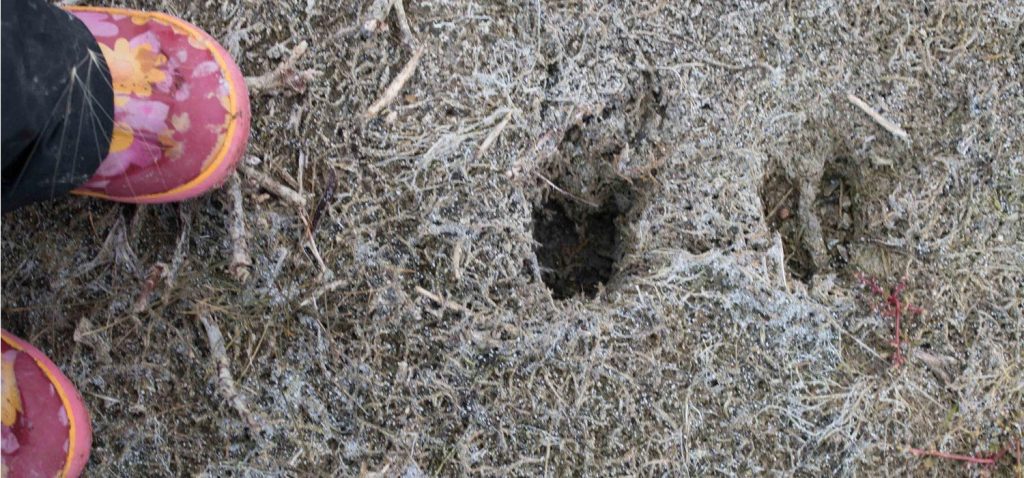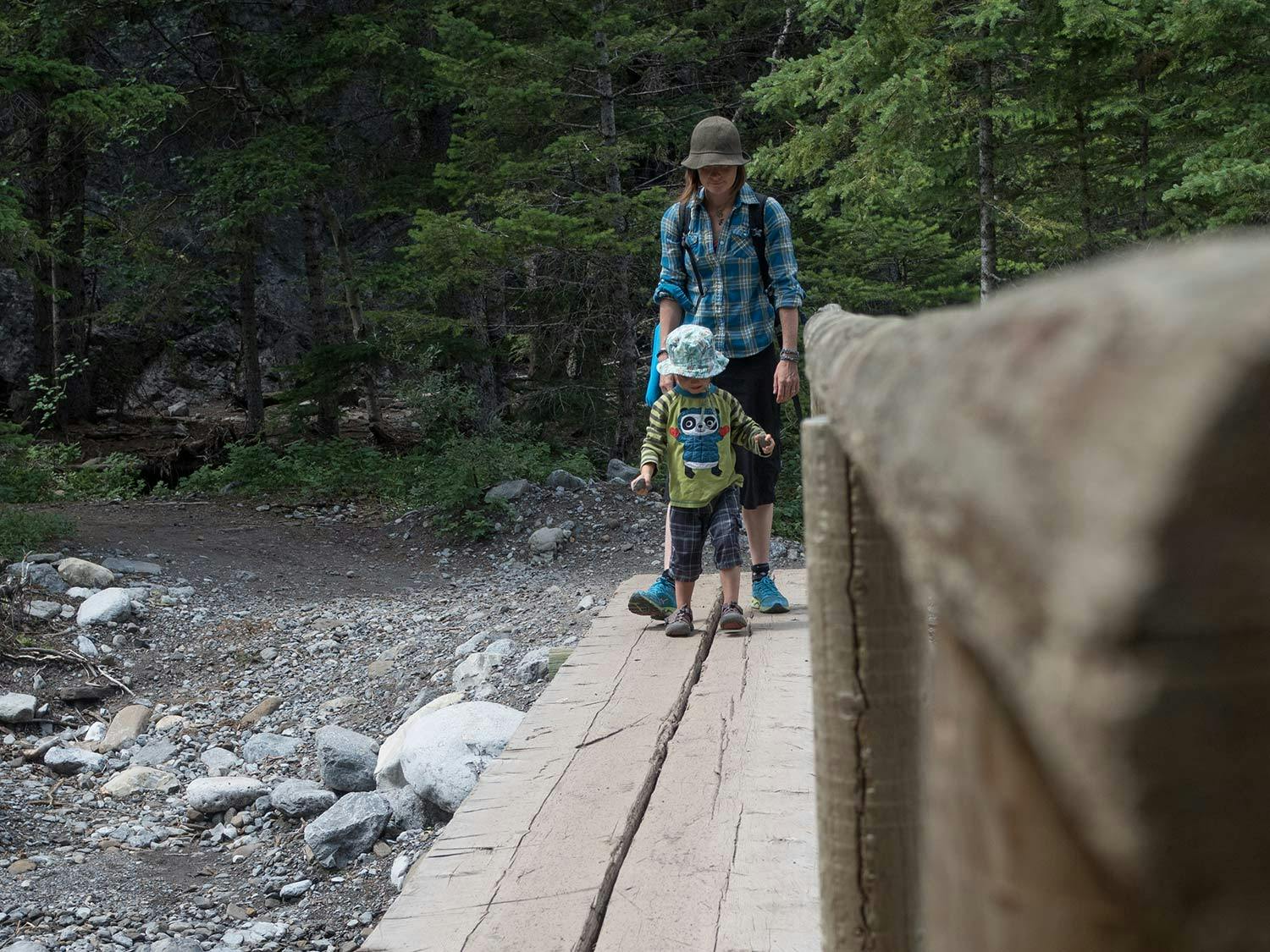Raising Kids who are Ready for Climate Change
I want my 3-year-old to be prepared for global warming. That means not telling him about it. Yet.
Little Grey has just learned the number 50, so lately everything takes place in that many minutes, days, or years. “Mama,” says my preschooler, looking up from his Lego space shuttle, “I love our home. I want to still live here in 50 years.”
I smile and say, “Well, that would be lovely.” I hope he doesn’t hear my voice falter, or notice that my smile never quite reaches my eyes. I have no idea if our neighbourhood will still be habitable by that point; in Canada, 61% of insured damage from extreme weather events between 2010 and 2017 was in my home province of Alberta. There’s ample evidence indicating that these volatile trends will only increase. Additionally, I worry about our off-grid well if the water table becomes polluted, or just too low to provide our family with potable water.
I’m suddenly both angry and sad — all I should be worrying about is whether I will still be around with him in 2070, not whether our neighbourhood will be.
As the US experiences its first wave of climate change migrants, I wonder: how did I just give birth to two tiny people only to worry about whether they’ll be pushed from their home by the time they’re adults? I’ve begun to deeply understand why some people are choosing not to bring children into this mess at all.
How did I just give birth to two tiny people only to worry about whether they’ll be pushed from their home by the time they’re adults?
One of the authors of the Intergovernmental Panel on Climate Change’s most recent report warns that the governments of the world are “nowhere near on track” to meet the goal of limiting global warming to 1.5C above pre-industrial temperatures. As individuals, we absolutely should be following the steps listed in the BBC’s response to the IPCC report — but as parents, many of us are still trying figure out how the heck to prepare our kids for the realities that no earthly policy or lifestyle change could prevent. Variations on the question “How do I talk to my kids about climate change?” dominate my search history.
When I first started writing this column, I was planning on teaching my children about all the “bad stuff” as soon as I could dress it up in developmentally appropriate language. In my last article, I cited a piece by American environmental journalist Michelle Nijhuis, called “How I Talk to My Daughter About Climate Change.” Reading her article led me to realize that my original plan may not be the best tactic.
I recently had the privilege of talking to Nijhuis herself. She and her family live in the Columbia Gorge in Washington State, where periods of heavy smoke are the norm each summer. This is similar to Alberta, and Nijhuis, too, is concerned about her 10-year-old growing up in this reality. But, as she describes in that article, she’s letting her daughter learn about terrible things “bit by bit,” and allowing her to “choose when and how much to ask.”
I was planning on teaching my children about all the “bad stuff” as soon as I could dress it up in developmentally appropriate language. But that may not be the best tactic.
Nijhuis confirmed that I’m not alone in my initial impulse to teach my kids about the carbon cycle, fracking, single-use plastics, and other staples of environmentalism as soon as they can understand the words. “But what’s more important,” she said, “is thinking about what skills you need to navigate your relationship with the planet, with a changing climate.”
“We’re going to have to solve problems together, whether this means having productive conversations at a town council meeting, or organizing your neighbourhood to evacuate in case you have a wildfire… These skills are going to become more important as we have to start to deal with the causes of climate change, hopefully, and mitigate the effects.”
So my new question is how to raise kids who are ready for the realities of the future, whatever those may be. For this, I turn away from Google, and towards a few wise people doing amazing work with youth. Through our conversations about how we can raise kids who are ready for whatever the future holds, I found three common threads: perception, reciprocity, and resilience as empowerment.
The Skill of Perception
Michelle Nijhuis says that exposing our children to bad news too early can take an “emotional toll” on them. Educator Jessica Krause would no doubt agree, and confirms how pivotal it is to help young children feel connected with the natural world without feeling fear — it should be their home.
Krause teaches at New Jersey’s Ridge and Valley Charter School, where much of the curriculum is adapted from activist and eco-philosopher Joanna Macy’s work. “At our school,” Krause told me, “we don’t allow bad news until grade 4. We try to limit… pain and suffering, to have loving experiences of the natural world. So that when they’re ready, they can take hold of that as a root to move forward. Not that we keep information out, but we try to handle it so it make sense for the ages we teach.”
Knowing what’s right there around you — for food, for medicine, for fibre — this is a skill of perception.
“Out here on the east coast,” Krause continued, “we are just inundated with water. Knowing the weeds that can survive, knowing the plants that can help us… knowing what’s right there around you — for food, for medicine, for fibre — this is a skill of perception.”
I have a lot to learn about the land in terms of food and medicine sources, and am excited to dive into these lessons. For now, we are learning about tracking the animals who live here, and talking about what they can teach us.

Kids can learn the art of perception in their local environment, like the author’s toddler checking out these deer tracks.
An Attitude of Reciprocity
Helping our kids learn what could feed, clothe, and sustain them in a time of need is more than just a skill of perception. There must be an attitude of reciprocity as well, Krause noted. “Trees are not objects, they are subjects… We try to teach young children about their place in the universe first… When we do their birthday celebrations, for example, we tell them that they are 13.7 billion years old, and it’s just these past five years that they’ve come into [human] form. We connect them to being stardust.”
When children perceive the gifts in the world around them, and feel reciprocity in their community of beings, they can both adapt to a changing world, and fight to preserve its integrity.
For now, I won’t worry about explaining the impact of industrial development on groundwater to a 3-year-old.
This is revolutionary to me — it is also immensely relieving. For now, I won’t worry about explaining the impact of industrial development on groundwater to a 3-year-old.
We’ll talk about the bigger issues when the kids are ready, and I’ll continue to role model by being a good environmental citizen. But today we sit and marvel at how a pelican floating on the lake’s surface might feel, and what gifts it brings. In time, my kids might ask about the threats facing pelicans, and how we might help them as part of their community.
Resilience as Empowerment
“Everyone likes to be resilient,” said Michelle Nijhuis, quoting an acquaintance, “but no one likes the experience of actually becoming resilient.”
That said, some people are helping others to see opportunity in the uncomfortable process of building resilience. Chris Gilmour is one — a writer and educator with the Changing World Project, he’s inspired by the need to not only help slow global warming down, but to teach people how to adapt to the changes that will inevitably occur.
“I work with hundreds of kids and adults a year, and many of them are still learning how to be in a stressful situation and still be able to see it through a calm lens… to re-centre, reconnect.”
Gilmour is far from alone in seeing the tremendous need to adapt to these changing conditions. What’s different about his approach, though, is that he wants people to approach this need “with a positive outlook. It’s about empowerment, not fear or helplessness.
When I think about the kids, one thing I want them to do is not fall apart when shit gets hard.
This ability to find composure amidst challenge is one that Krause also sees as crucial: “When I think about the kids, one thing I want them to do is not fall apart when shit gets hard.”
Gilmour encourages parents and teachers to resist protecting our youth from dissonance, but to instead guide them through it. Whether it’s resolving a schoolyard conflict, organizing a school walk-out, or planning a mountaineering expedition, our job as adults is not to tell our kids what to do, but to stand by and support them as they work through the hard stuff on their own.
I also spoke with 20-year-old Lily Barraclough, who embodies young people’s capacity to meet dissonance with a brave face and stand tall in its shadow. Barraclough is the Canadian program coordinator for iMatter, an inspiring youth-led organization agitating for hardcore climate policy. “Most of our youth are students,” Barraclough said, “we should be studying for tests, but instead we’re going to speak to city councils and politicians.” She emphasized how pivotal it is to honour the voices of young people, and to support them in their visions.
Barraclough’s courage aligns with something Nijhuis told me: resilience is also about “trusting our kids enough to not necessarily protect them from bad experiences, to let them face progressively harder challenges with our support on the sidelines. And really let them learn those lessons that… are going to make them better able to deal with the challenges of the world they’re inheriting.” And I know that when my kids are ready, they’ll be able to take these challenges on.
Sitting on the edge of our lake with Little Grey and Mini Ewe, I feel much more settled than before I went down this rabbit hole of inquiry.
“Mama, I want to be a pelican in 50 years,” Grey says, looking across to the opposite shore. I’m still anxious for our world. I’m still grieving for the future I wanted them to have. But I smile at him, and this time it reaches my eyes.
